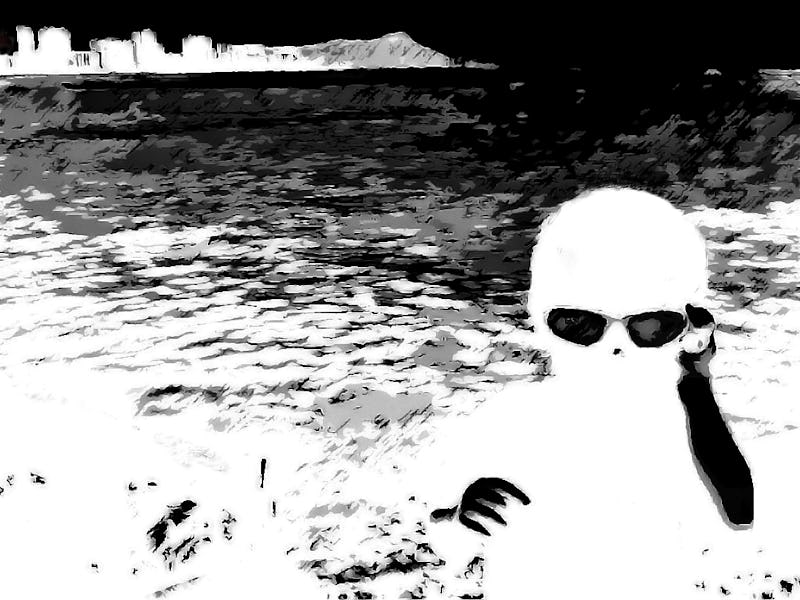These Freaky Signals From Space Could Unravel the Universe's Secrets

For all we know, aliens from advanced civilizations at cosmological distances may be trying to send us messages. These signals, called fast radio bursts (FRBs), travel from far-away galaxies with no known source of origin, although some have speculated that they may come from extragalactic civilizations.
In light of the fact that soon, our cell phones could be used to measure and understand what these weird signals are, it’s worth taking a deeper dive into what exactly FRBs are, and why they matter.
FRBs are intense signals that are similar to radio or laser signals. They might not be a force of nature, but possibly artificial in origin. Researchers are puzzled about where they came from, and in the past decade, less than two dozen FRBs have been identified using giant radio telescopes like the one in Arecibo Observatory in Puerto Rico.
“They’re extremely bright and their nature is not understood,” Avi Loeb of the Harvard-Smithsonian Center for Astrophysics, whose new paper details how we might be able to use cellular phones to better study FRBs, tells Inverse. “They require coherent emission by many electrons, of the type that you get in a radio antenna or a laser.”
There might be FRBs alive right in our Milky Way though. These signals are louder than the ones from distant galaxies, and using cell phones, we may find out where they actually come from — extraterrestrial life, nature, or something else.
“We might discover that one of these ‘monster FRBs’ lives in our galaxy, the Milky Way, in our own ‘backyard’, so it is ten billion times louder than the very distant FRBs we have seen so far,” study coauthor Dan Maoz of Tel Aviv University tells Inverse.
Although currently we have giant radio telescopes detecting FRBs, most FRBs last for a thousandth of a second and originate from the edge of the universe. A signal in the Milky Way would be much louder.
“Because an FRB from the Milky Way should be so much brighter, it can be detected with a cell phone or a small electronic device that costs tens of dollars instead of a giant radio dish,” Loeb says.
“Large radio telescopes can point at a given time only to a very small part of the sky, typically the size of the full moon, and they are designed to detect signals billions of time fainter than the nearby FRBs we are thinking of, which are comparatively very bright, while no one can say where in the sky this FRB will be,” Maoz says. “The network of cellphones is ideal both in terms of being able to receive the signal and in terms of being sensitive to signals from any direction.”
With the help of citizen scientists, scientists can study FRBs in different frequencies of radiation, like radio waves, visible light, and X-rays. One possibility is using a Citizens-Science app, where people with the app can listen for and record candidate FRBs and upload the recordings to a website. Another option is using FM-radio receivers in cell phones to search for FRBs at lower frequencies. A third option is using “software-defined radio” devices that cost about $10. These can be plugged into USB ports of personal computers to create a global network of receivers. A global network of these detectors could find nearby FRBs in no time.
Researchers believe that if an FRB occurs in our own galaxy, a global network of cell phones or radio receivers can “hear” it, especially since previous FRBs were detected at radio frequencies that match those used by wifi and cell phones. So if an alien from an extragalactic civilization calls us, we just need to pick up our phones.
Abstract: If fast radio bursts (FRBs) originate from galaxies at cosmological distances, then their all-sky rate implies that the Milky Way may host an FRB on average once every 30-1500 years. If FRBs repeat for decades or centuries, a local FRB could be active now. A typical Galactic FRB would produce a millisecond radio pulse with ~1 GHz flux density of ~3E10 Jy, comparable to the radio flux levels and frequencies of cellular communication devices (cell phones, Wi-Fi, GPS). We propose to search for Galactic FRBs using a global array of low-cost radio receivers. One possibility is to use the ~1GHz communication channel in cellular phones through a Citizens-Science downloadable application. Participating phones would continuously listen for and record candidate FRBs and would periodically upload information to a central data processing website, which correlates the incoming data from all participants, to identify the signature of a real, globe-encompassing, FRB from an astronomical distance. Triangulation of the GPS-based pulse arrival times reported from different locations will provide the FRB sky position, potentially to arc-second accuracy. Pulse arrival times from phones operating at diverse frequencies, or from an on-device de-dispersion search, will yield the dispersion measure (DM) which will indicate the FRB source distance within the Galaxy. A variant of this approach would be to use the built-in ~100 MHz FM-radio receivers present in cell phones for an FRB search at lower frequencies. Alternatively, numerous “software-defined radio” (SDR) devices, costing ~$10 US each, could be plugged into USB ports of personal computers around the world (particularly in radio quiet regions) to establish the global network of receivers.